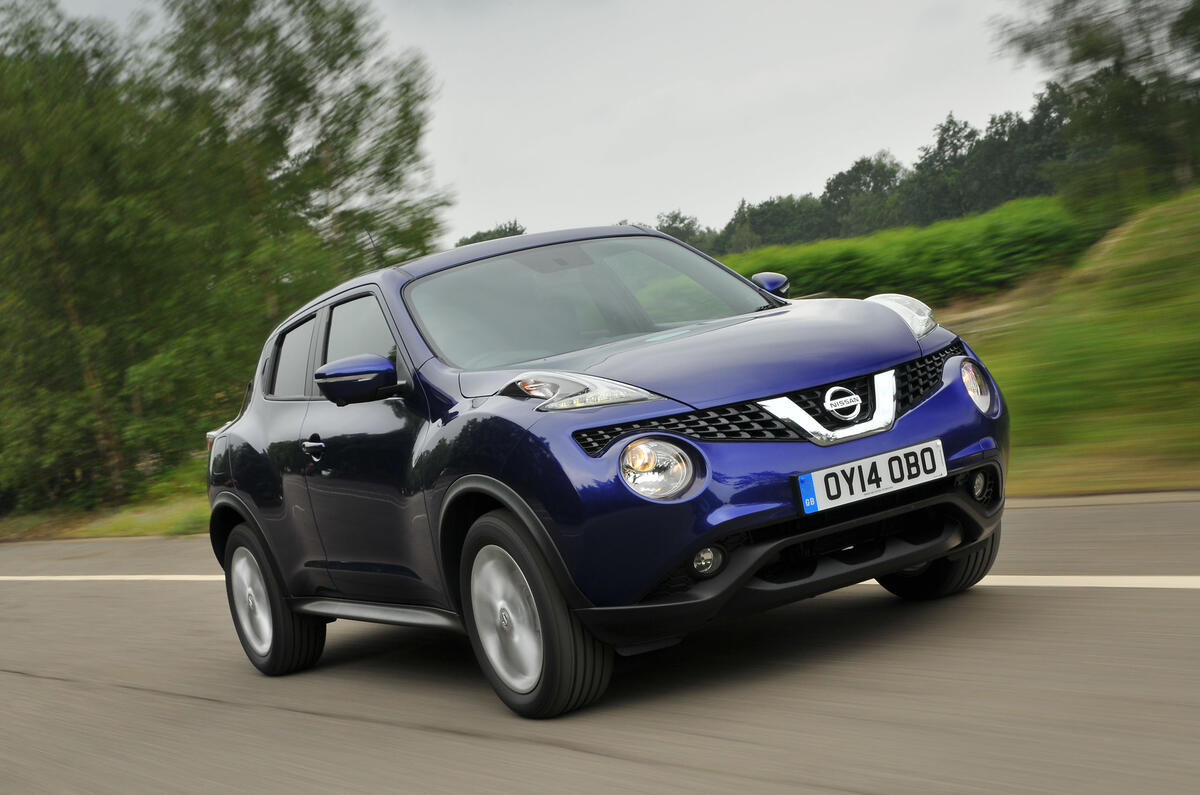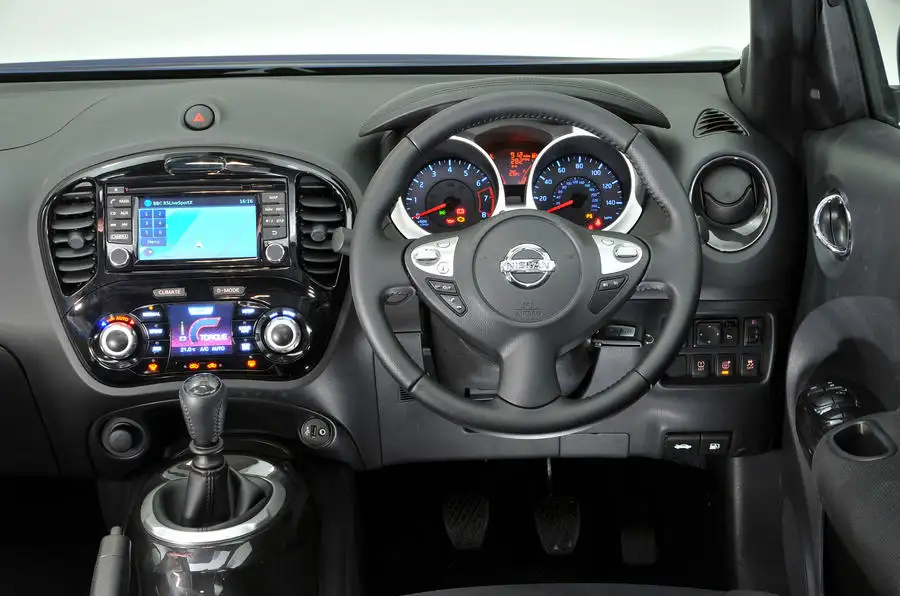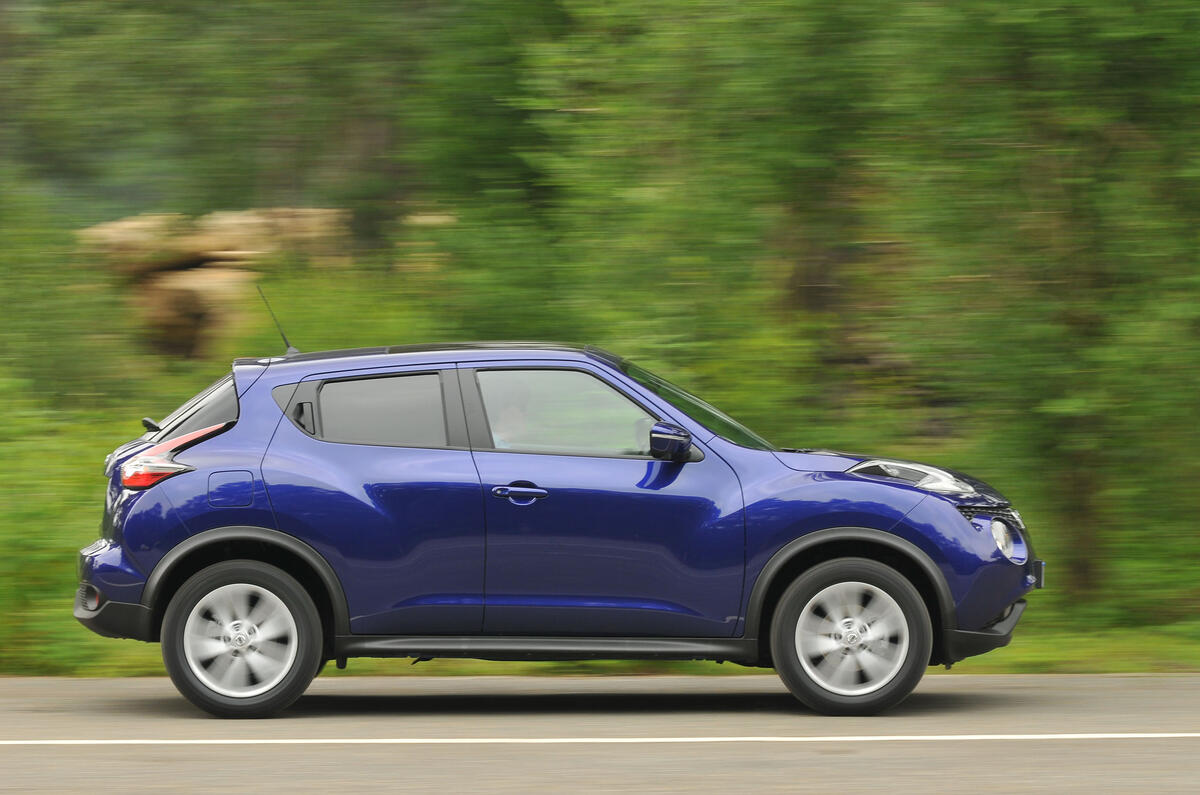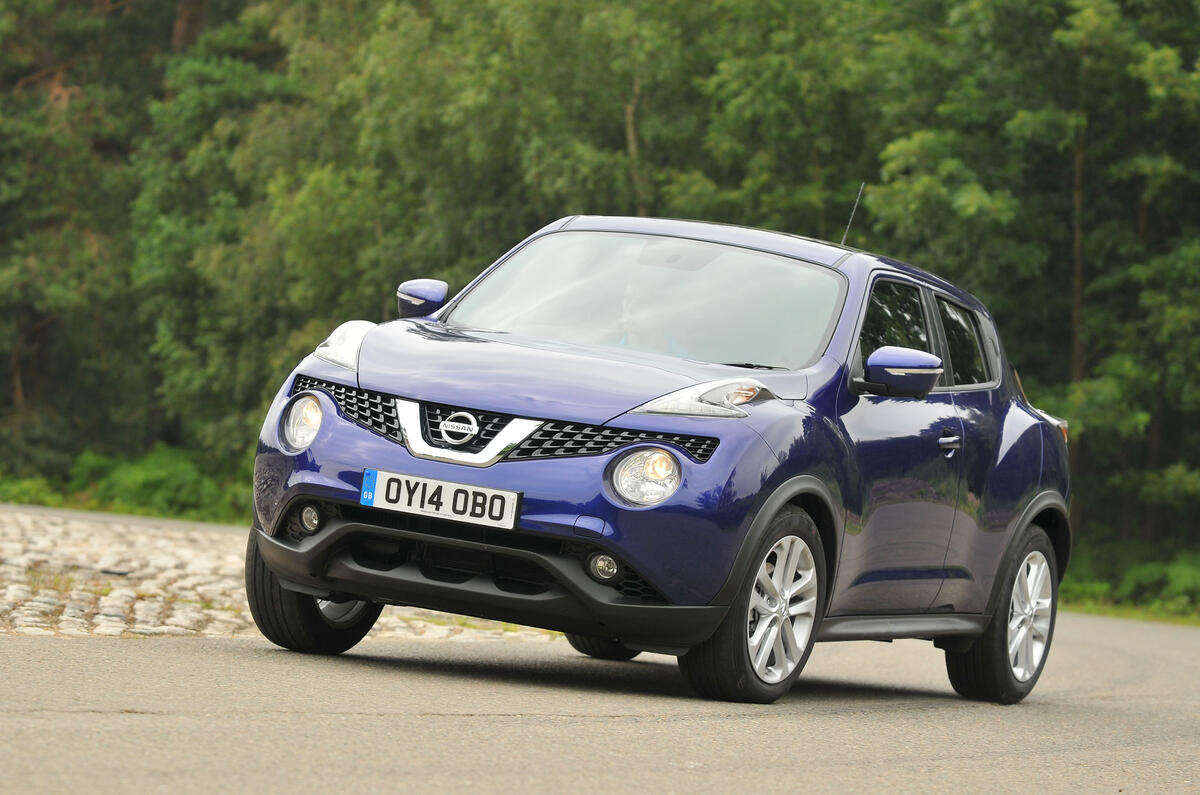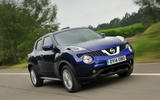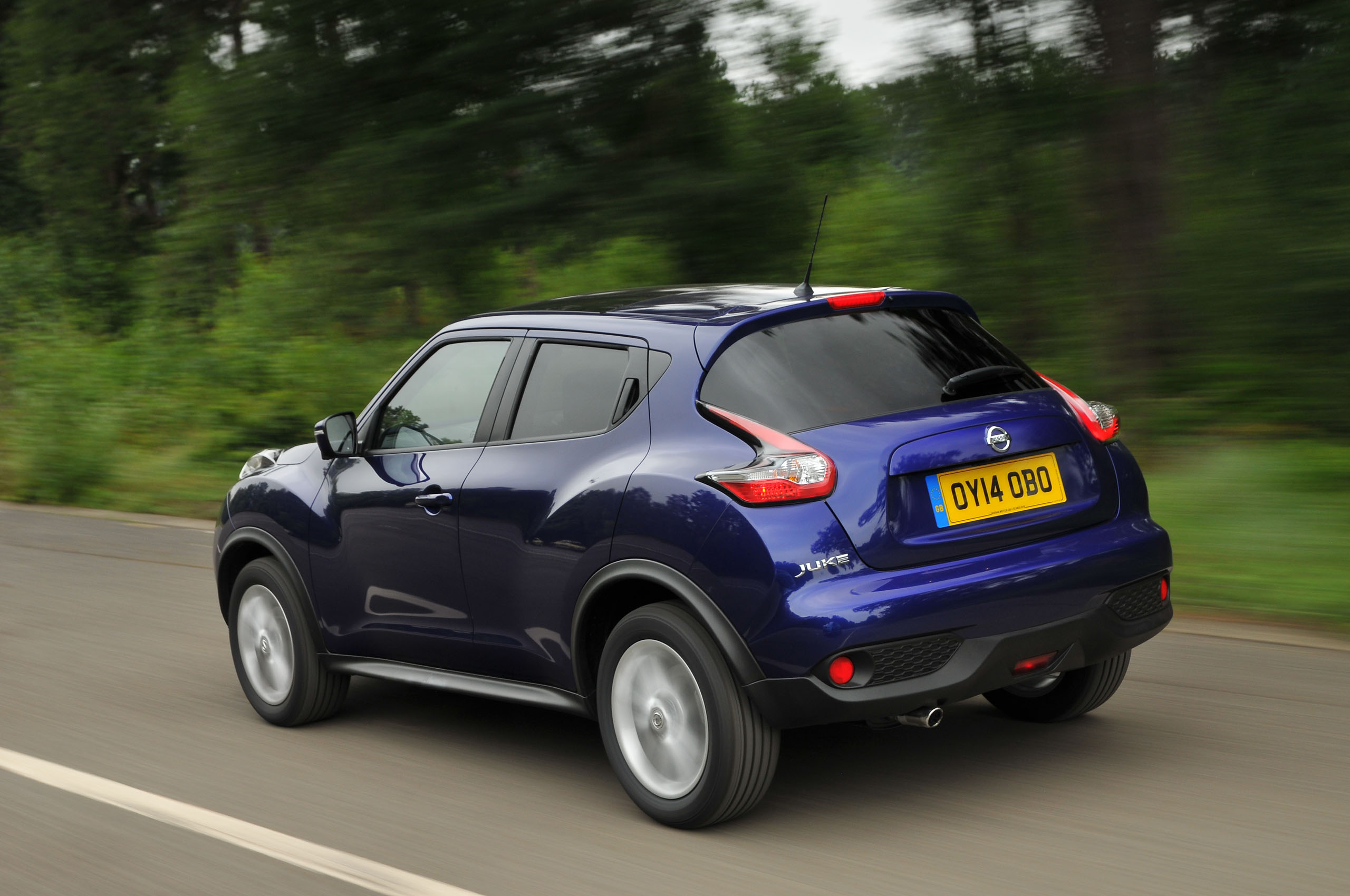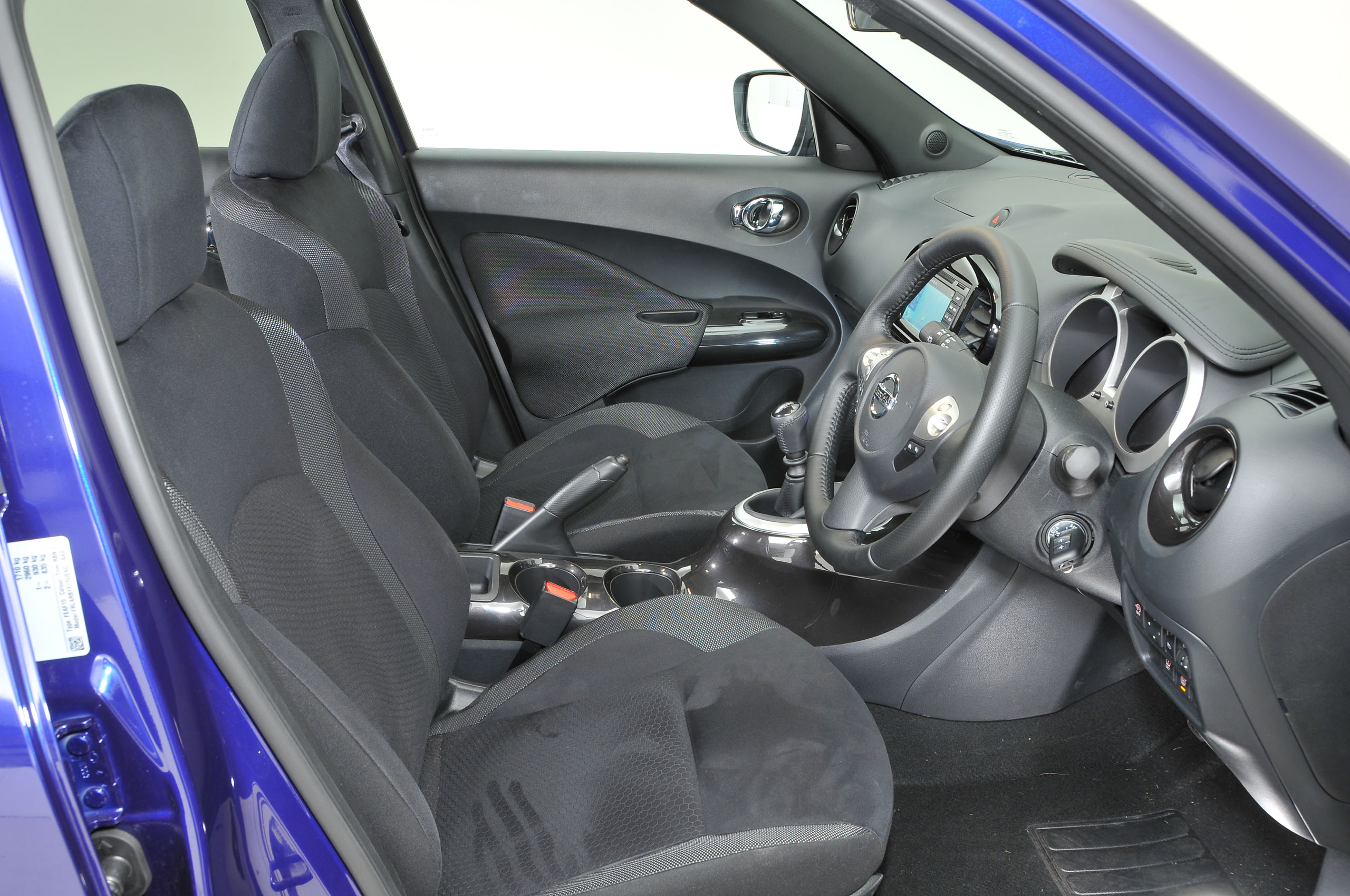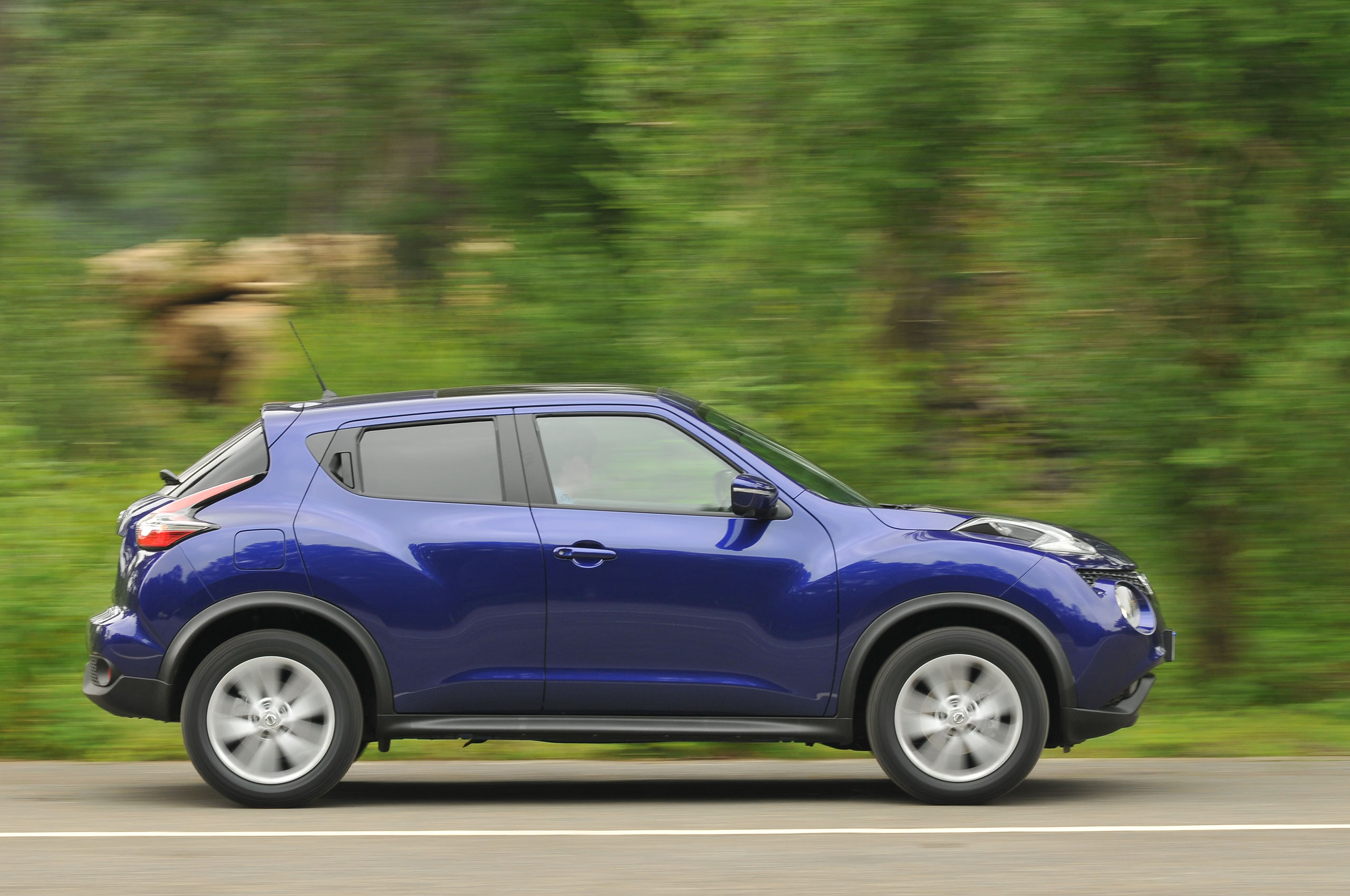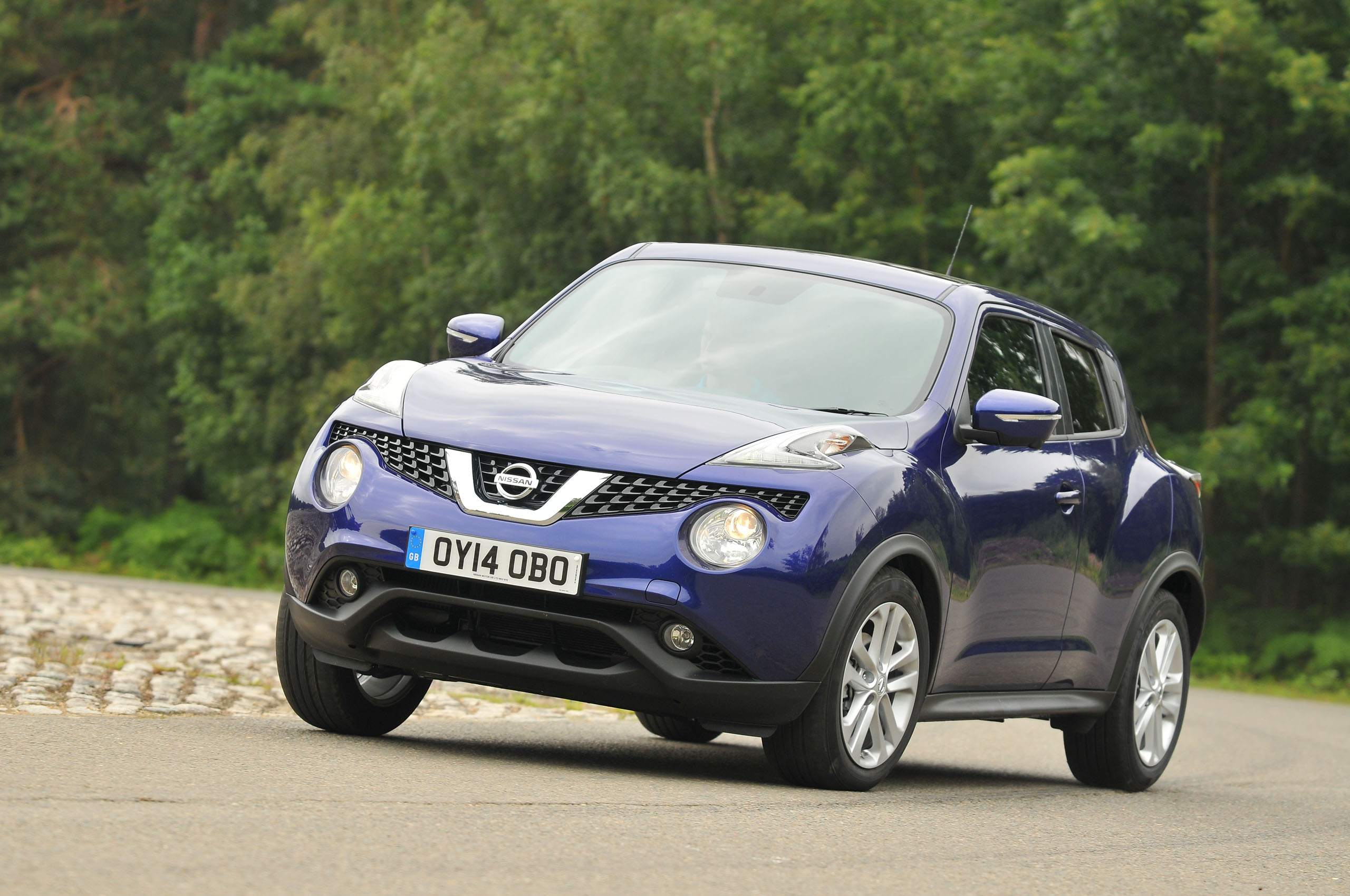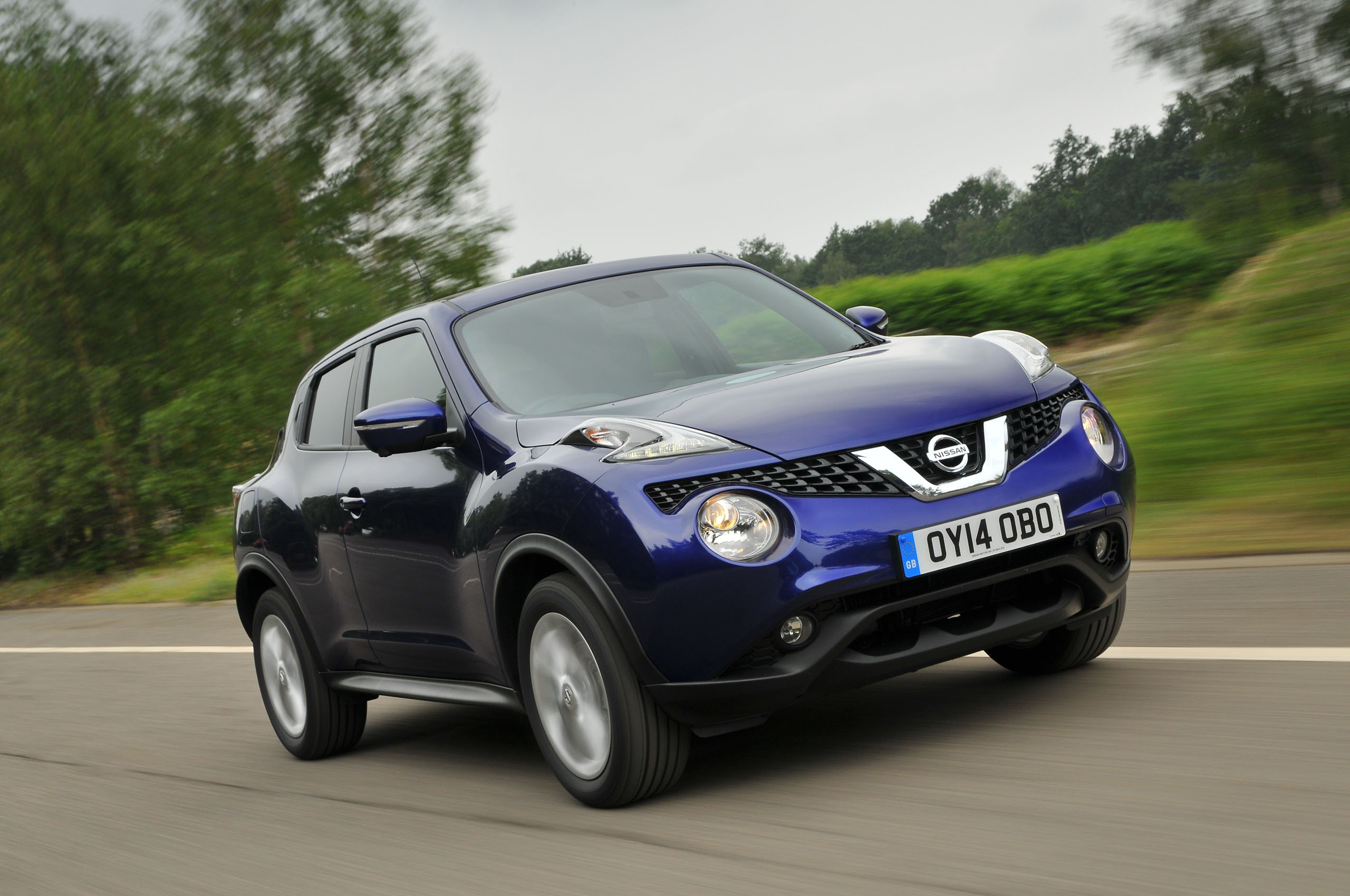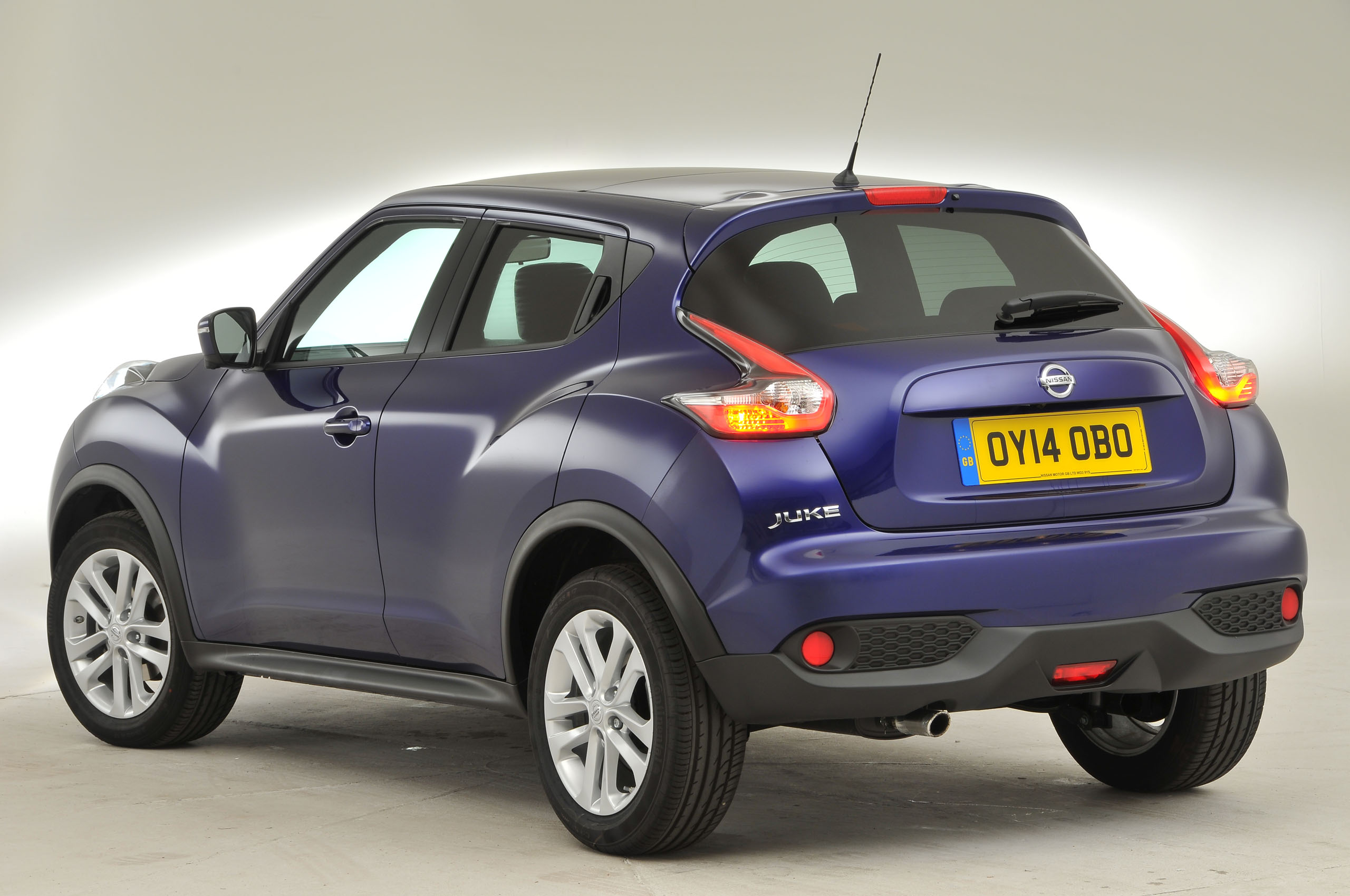A motorcycle inspired interior? Apparently so. The Nissan Juke’s instrument cluster’s two dials seem separate from the dashboard, framed in mock-aluminium with a cowling floating above and joined to the dial cases by two struts. All you need are the handlebars and the rush of wind.
Then there’s the centre tunnel, high and rounded and painted in a glossy silver metallic to look like a motorcycle’s petrol tank. In top Tekna versions, the silver is replaced by body colour.
Lowest-grade Visia gets remote central locking, six airbags, 16in alloy wheels and LED day-running-lights, while air conditioning, all round electric windows and speed sensitive power steering is included in th package. Upgrade to Acenta, and you'll find Bluetooth, a USB port, 17in alloys, front foglights, cruise control and climate control all included, while the N-Connecta comes with a 5.8in touchscreen infotainment system complete with sat nav, reversing camera, auto lights and wipers, and keyless entry are part of the package.
The range-topping Tekna models come with Nissan's Safety Shield Technologies, which includes - blind spot warning, moving object and lane departure detection and around view monitor. There is also a leather upholstery and front heated seats thrown into the package too.
The Nismo RS Juke comes with a few sporty extras including, upgraded brakes, sports suspension, a limited slip differential and numerous Nismo adjustments to the exhaust, aggressive bodykit, rear diffuser, and bucket seats.
The Juke is not an expensive car, as all the hard interior plastic surfaces show. However, the interesting details divert your senses: chrome door handles like giant ring-pulls, plentiful cupholders, a leather-rimmed steering wheel with knurled switches for stereo and cruise control, the decent stereo itself and, best of all, the Nissan Dynamic Control System, which comes as standard on Acenta, N-Connecta and Tekna cars. The graphics are a bit Windows 2000, but the idea is neat: it controls the climate system or other parts of the set-up (automatic headlights, unlocking regime and so on), activates a trip computer, triggers a g-force meter or opens a bar-graph history of your efforts at driving economically. It’ll also adjust the throttle settings in Sport mode.
There’s enough space in the Juke for two normal-size adults in the back, or three at a squeeze, but there’s no MPV-like seat adjustability here, and the narrow windows make it feel oppressive.
The Nissan Juke sits you high relative to the road, but with the seat at its lowest setting you can create quite a racy, laid-back driving position. You can still see the bonnet, and the wing-top lights act as a good positioning guide. The steering wheel adjusts only for height; the adjustment lacks a helper spring, so the wheel crashes downwards if you’re not ready to support it. The front seats are comfortable enough, with strong but quite soft lumbar support.



